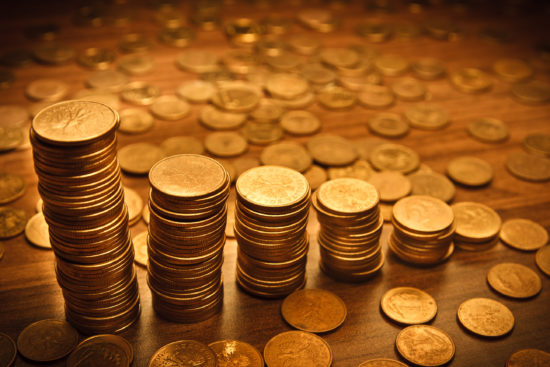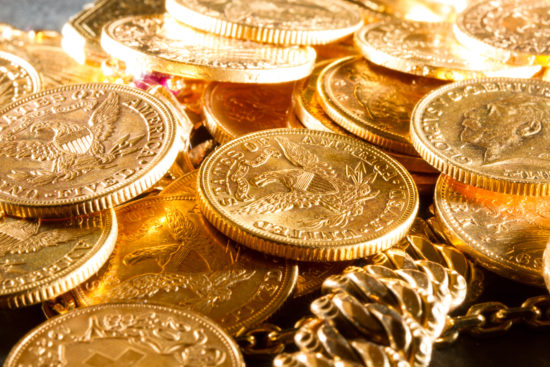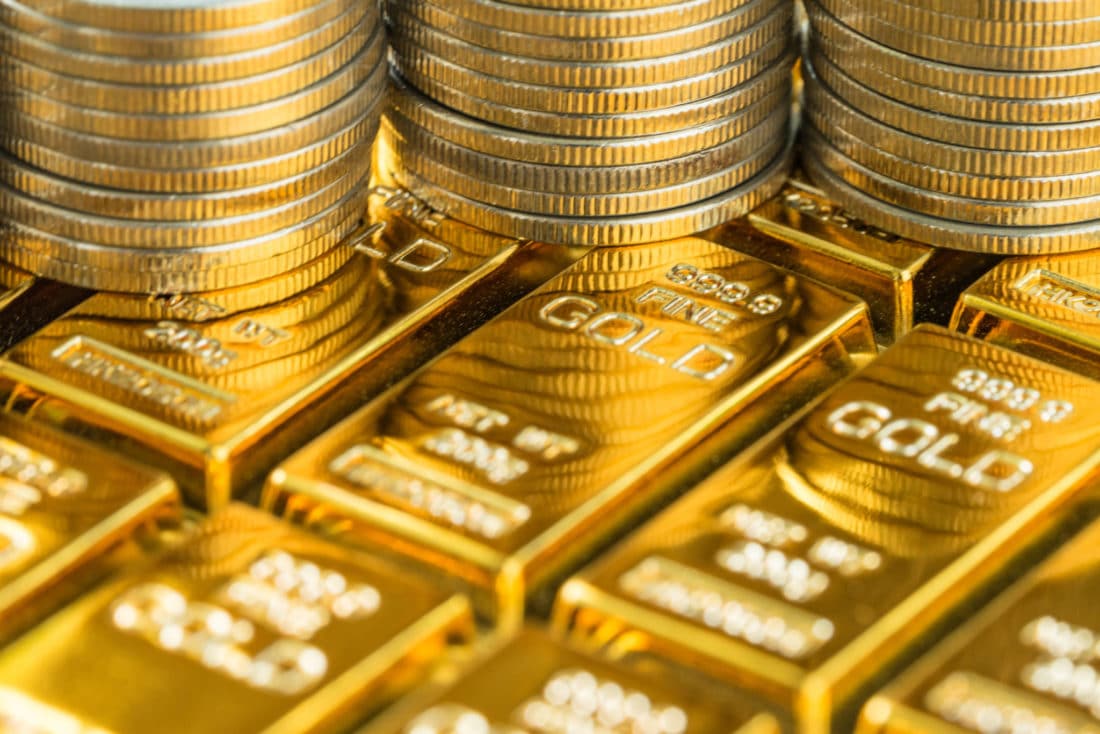There is no metal or element with a more tumultuous history than gold. With such widespread value and respect, gold has had tremendous authority since time immemorial and continues to influence the world today. It is the only metal still held in bulk by governments and central banks across the world. There are so many benefits to owning gold. Even now, as unemployment is on the rise, and the world seems constantly on the brink of yet another crisis, gold is increasing in value.
The price of gold continues to trend upwards regardless of economic turbulence because it’s seen as a safe haven. You can purchase large amounts of gold to protect your wealth, and this strategy has been proven successful time and time again. Why is gold so valuable in the first place? And what makes its value so reliable that investors and governments alike put their trust in this metal?
There are numerous reasons why gold has the value we assign it. From its various uses in medicine, manufacturing, and even reaching into the cosmetic industry, gold has proven itself to have a vast spectrum of applications. In this article, we’ll break down all the aspects which make gold one of the most coveted substances on earth, and even why it’s more valuable than other precious metals. Read on to discover the different market influences which have an impact on the price of gold. We will also give light to the many uses for gold we benefit from every day.
What is Gold?
Gold is a naturally occurring periodic element, with the symbol Au. It is often described as a dense, shiny, soft, and malleable metal. It is yellow in color and a member of the transition metals group. Our use of gold dates back to the times of the Ancient Egyptians, where Pharaohs would amass tremendous amounts of gold as a sign of wealth. Gold has always been highly valued and displayed as a sign of wealth and power. There is no doubt that gold has been treasured for centuries, so now let’s dive deeper into the reasons why it’s so valuable.
Why is Gold Valuable?
There are seven key reasons why gold is so valuable, and each individual reason is important for investors to know. All these different factors work together to drive up the price of gold and make it such a reliable form of wealth. Outside the influence of interfering governments and third party organizations, the attributes which make this precious metal so popular set the value of gold as a stable marker for wealth.
Other notable metals such as silver and bronze have been highly prized in the past, but no other element throughout human history has held its store of value like gold. The reason for this includes special medical applications, highly versatile industrial uses, and the timeless staple of how it is prized for its simple beauty and aesthetics in the world of jewelry. Let’s begin by understanding which physical attributes of gold make it valuable.

Gold has been incredibly valuable since the times of ancient civilizations.
1. Physical Properties
Gold is most often described as a soft, yellow metal. It is highly malleable and ductile meaning it’s easy to work into many different forms. From a materials science perspective, gold also makes an excellent conductor working as a conduit for electricity. Gold has the atomic number 79, placing it in the periodic group of “noble metals”. Platinum is another example of a noble metal. This group of elements is resistant to chemical reactions. Noble metals do not corrode and are hard to dissolve using acid. At first glance, we can see some valuable attributes of gold from its physical properties alone..
The high atomic number of gold means it’s highly effective at conducting both heat, and electricity. This low resistance makes it ideal for many different applications. Additionally, the soft but incredibly dense nature of gold means that it can be spread incredibly thin. Just a single gram of gold can be hammered into 165 meters of wire. The physical properties of gold make it an incredibly versatile material and one that can withstand the elements for years unchanged.
2. Historical Significance
Gold coins were the first-ever successful form of money. The use of gold as currency was widespread for centuries before the introduction of fiat currency. Gold was the perfect choice as the preferred way to trade, as its high value and small size made it easy to bargain with and transport. Originally, gold bars and nuggets were still used for bartering, with each small piece having its value argued over.
This changed in 550 BC when the first-ever gold coins were minted. As the pieces of precious metal were all of equal weight and purity, their value could not be challenged. The idea of a uniform currency quickly spread, and gold coins became the currency of the world. Gold, with its lower melting point and higher moldability, was easier to turn into coins than other metals, such as copper, another reason this form of money was so popular.
So why does the historical significance of gold give it value today? Well, until relatively recently, paper money was still backed up by an agreed-upon sum of gold. The inherent value of a banknote is non-existent; all that gives it value is the government it is purportedly backed by. But this, in turn, is backed by gold. Gold is what gave our paper money any value in the first place, so in some ways, the price of gold is still intrinsically linked with the value of the economy. Investors today can rely on gold because it has stood the test of time. Gold has remained a highly valued asset throughout the majority of human history.
2. Beauty and Aesthetic
The most likely place that you’ll see gold today isn’t in the form of bars or coins. You’re much more likely to spot it around someone’s neck. Gold jewelry has been prized as a symbol of wealth, status, and power for eons, and not just because of its monetary value. Gold can be found in high purity in nature and can be easily worked into intricate designs resulting in this precious metal becoming quickly treasured. The shiny yellow color of gold makes it very aesthetically attractive. Gold has been used to make necklaces, earrings, and all sorts of adornments since its discovery.
Ancient societies amassed huge amounts of gold as a symbol of wealth and power. In doing so, they created one of the first long-term stores of wealth. Unlike food, livestock, and other worldly possessions, gold didn’t corrode or decay over time. Instead, its beauty lived on for generations, with important gold heirlooms passed down through the generations. Because of the unshakable aesthetic appeal of gold, gold-based jewelry will always hold value in our society. Jewelry forms a huge portion of the world’s demand for gold metal and has done so for years into the past. While our technological and chemical needs for the metal gold may change over time, humanity is unlikely to relinquish its obsession with its beauty.
3. Chemical Properties
As well as useful physical properties such as high conductivity and its malleable nature, gold has several fascinating chemical properties. As a noble metal, gold cannot oxidize and tarnish, meaning it can maintain perfect purity and condition. There is no test of time that gold cannot withstand, as it has the highest corrosion resistance of any metal known to man. The only solution which can corrode gold is a mixture of nitric and hydrochloric acids.
This incredibly low reactivity level means gold can be useful for any number of things. For example, gold is the perfect material for piercings that your body won’t reject. Gold doesn’t react with the skin which makes it a safe and attractive choice for jewelry. The chemical properties of gold make it perfect for uses in dentistry and electronics. We’ll go into more detail about the medical and industrial applications which make gold so valuable later on. The fact that gold is so unreactive and neutral alone is enough to prove how valuable the metal is. No other metal has these same chemical properties, meaning gold is irreplaceable in so many different areas.
4. Industrial Applications
When it comes to uses in technology and industry, there are plenty of other metals more useful than gold. Silver has more industrial uses, while copper is much easier to find and conducts electricity just as well. It’s actually the lack of chemical reactivity which gives gold such high value in the industry. The other metal alternatives we just mentioned will corrode, decay, and lose their useful characteristics over time. On the other hand, gold cannot tarnish, and therefore whatever its function, it will keep working forever.
The largest industrial usage of gold goes to consumer electronics. All of the thousands of digital devices we rely on daily couldn’t function without gold. This is because certain devices use low voltages and currents which even the smallest tarnish or corrosion could interrupt. Tiny amounts of gold are used to ensure the electronic circuits continue to run and are vital to the way of life we’re accustomed to. Every smartphone and computer in the world uses gold to operate effectively, creating a demand unlikely to diminish.
The industrial uses of gold will always affect its value, and this influence is only increasing as our reliance on technology continues to rise. Investors in the gold supply can be certain that the industrial demand for gold will remain reliable, as this valuable metal is a fundamental part of our daily lives. Until modern technology becomes obsolete and the unreactive nature of gold is no longer needed, the metal will always have huge value as an electronic component in manufacturing.
5. Medicine
Another reason why gold is so valuable is the fact that it literally saves lives. There are hundreds of uses for gold in medical and scientific fields because of its physical and chemical properties. These make gold irreplaceable in our society, as great medical advances could not have happened without it. The first uses for gold in the body were in dentistry, for tooth fillings and wires, however, much has progressed since then.
Because your body is unlikely to reject gold, it’s alloyed with the stronger platinum for use in prosthetics. Gold also has antimicrobial properties and is used in implants to reduce the chance of infection. Currently, gold is the subject of many experimental medicines created to combat antibiotic-resistant super-infections.
A new field in medicine concentrates on the use of gold nanoparticles, the benefits of which we are still discovering. Tiny fragments of the chemical element gold, much smaller than ever visible to the naked eye, have impressive medical applications. This technology has been used to test for malaria and suppress tumor growth, with more research progress being made every day.
Uses for gold in the field of medical technology translate into lives saved. Gold’s medical applications, one could argue, is its most important use of all. This amazing potential for gold makes it incredibly valuable, as the benefits to our health are undeniable. With vital applications in dentistry, prosthetics, and the treatment of cancer, the yellow metal is important to sustaining and supporting human life in a variety of facets. The need for gold in medicine will never diminish, therefore this metal will always hold a deep intrinsic value.
6. Rarity
All the reasons we’ve previously listed outline what makes gold useful, and desirable. It’s an ideal form of currency, a perfect conductor, an enduring pillar of wealth that also serves as a vital resource in medical technology. All of these aspects assign a certain value to gold, but another factor of what truly drives up the gold price: Pure gold is an incredibly rare commodity, and the scarcity of gold is one of the biggest reasons it costs so much.
Unlike other elements such as copper, which is created and then used up, the amount of gold in the world today is exactly the same as during ancient times. The world has a finite supply of physical gold, and most of it is already in use. More than 50% of all gold in the world exists in the form of jewelry, while another 30% is sitting in bank vaults as either personal or governmental wealth. While this gold metal is backing up the value of the US Dollar and other paper currencies, it can be used for the many other applications we’ve outlined.
The majority of physical gold in the world has already been mined; the gold mines still operating produce at an incredibly slow rate. For every ounce of gold dug up from the earth’s crust, an additional 5 tons of rock must also be mined. This process is time and labor-intensive, so it’s easy to see why the price of gold is incredibly high. This built-in scarcity also means the planet will soon run out of this rare metal, which is bound to drive the price even higher.
As a chemical element with so many useful properties, gold is highly coveted. Due to the decreasing supply and ever-increasing demand, the value of gold is unwavering. It is estimated that there is a total of about 168,000 tonnes of gold in the world, which all together amounts to a 19-meter square cube. We cannot manufacture gold, nor mine much more from beneath the earth’s crust, so this current supply is all the world has. This makes gold one of the most scarce and valuable resources in modern civilization.

Gold has long been considered one of the best stores of value against fiat currencies.
Why Is Gold More Valuable Than Silver?
The gold to silver ratio leans heavily towards gold, with the yellow metal priced at many times the cost of the gray one. But silver has plenty of historical significance, as well as medical utility. Why then, is gold still so much more valuable? There are a number of reasons why the price of silver will always be lower than the price of gold:
Supply: We know that the majority of all gold in the world has already been mined, and this amount is much higher than the physical silver held across the globe. But the key difference is that it is estimated there is 17 times more silver still in the earth’s crust than there is gold. While gold mines everywhere come close to running dry, silver is still dug up at a respectable rate.
Demand: The current demand for gold is higher than the demand for silver, although this is predicted to change in the near future. For now, however, gold remains the more popular choice in jewelry and is more effective when used in electronics.
Density: Gold is about twice as dense as silver, making it more portable in any form. Whether it’s decoration or a form of money, you can carry an amount of gold in US Dollars much more comfortably than the equivalent in silver.
Longevity: Silver can tarnish easily over time, and is prone to erosion as well. Gold suffers neither of these problems due to its low reactivity, making it much more long-lasting and therefore more valuable than silver.
Why is Gold Valuable to Investors?
It’s clear that the intrinsic value of gold is important to the world and has been for a long time. These aspects give gold its intrinsic value and ensure that we never stop using gold in all its applications. But what makes gold such a valuable investment? For the reasons we’ve given above, physical gold has been hoarded by governments and central banks for generations. They use this gold to back up the value of flimsy fiat currency, proving that paper money is only worth something because of gold.
A supply of physical gold equals a financial safe haven because the intrinsic value of this metal will never diminish. If stock markets, paper currencies, and digital bank accounts all fall, gold will remain a sure measure of wealth. Investors can benefit from gold in the same way that governments do; by procuring their own supply of physical metal. By owning gold, you benefit from all the things that make it so valuable and can rely on these factors to ensure that your own personal wealth is safe.




